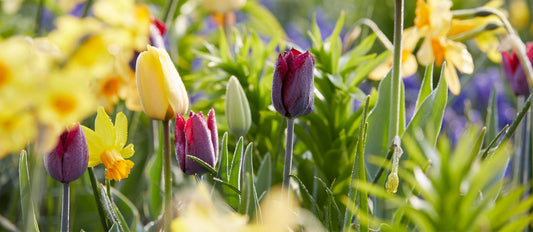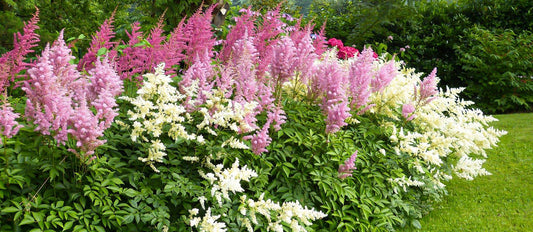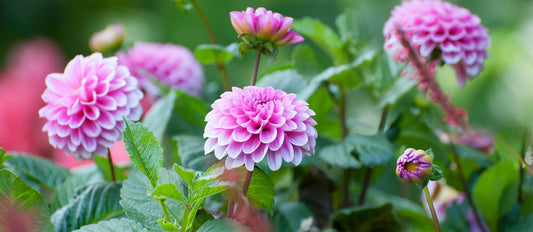Over the years, the tulip has become a symbol of the Netherlands. Originally, however, tulips did not come from the Netherlands but from Turkey. Tulipa is the Latin name of the tulip. This is derived from the word tulipan, which means turban. The shape of the tulips was compared to that of a turban. Today there are many different varieties of tulips. You might not know all of the many of the varieties. Get to know the tulip even better.
The Tulip
Tulips are spring-flowering flower bulbs. Plant them in autumn and enjoy their colours in spring. The bulb of the tulip has an onion-like shape. The tulip stores the food it needs to grow in the bulb. In contrast, tubers such as Dahlias, store food in their roots. Because the tulip stores its own food, it does not need extra food in the form of fertiliser after planting or during flowering. The bulb contains enough food for 1 flowering period. That is why tulip bulbs are categorised as annual flower bulbs. Every autumn new tulip bulbs are planted for the next spring. Take the old bulb out of the ground after spring. You might see a new bulb growing with the parent bulb. Only the big baby bulbs have a slight chance of blooming. Combine these with newly purchased bulbs for guaranteed success.
Tulip varieties
Many tulip lovers only know about the single tulip, common in bouquets. True plant aficionados know that there are many more beautiful tulip varieties. Of course, most of them can be found in Bakker's extensive range. The following varieties really brighten up a spring garden:
Darwin Tulips
The Darwin tulip is the first tulip cultivated in the Netherlands. These tulips are known for their cup-shaped flowers in bright colours such as yellow, orange, red and pink. Double-coloured Darwin tulips are often found in the bulb fields. The tulip blooms between April and May, and grows to be about 70 cm tall.
Combinations
Many tulip varieties can be combined with each other or with other varieties of flower bulbs. When combining flower bulbs, keep the following in mind:
- Of course it is nice if the colours go together. Everyone has their own style and colours to suit.
- Flowering period. Before purchasing flower bulbs, choose how long you want to enjoy them and whether you want bulbs to bloom simultaneously or in succession. For a long-lasting 'parade' of tulips, you could combine an early-flowering double tulip with a late-flowering double tulip. Do you want to have multiple varieties bloom at the same time? For example, combine fringed tulips with lily-flowered tulips.
- Planting distance. Not all flower bulbs should be grown closely together. They can damage each other during growth or inhibit development. Before planting, always check the label for planting distance. In addition, planting distance is also important for the choice of whether to plant bulbs in pots or open ground.
If you find it difficult to choose between all the beautiful tulips and other flower bulbs... Check out Bakker's flower bulb packages! These ready-to-use packages make it easy to have a spring flower fest.
Do you want help planting your tulip bulbs? Read the article on planting tulip bulbs.




